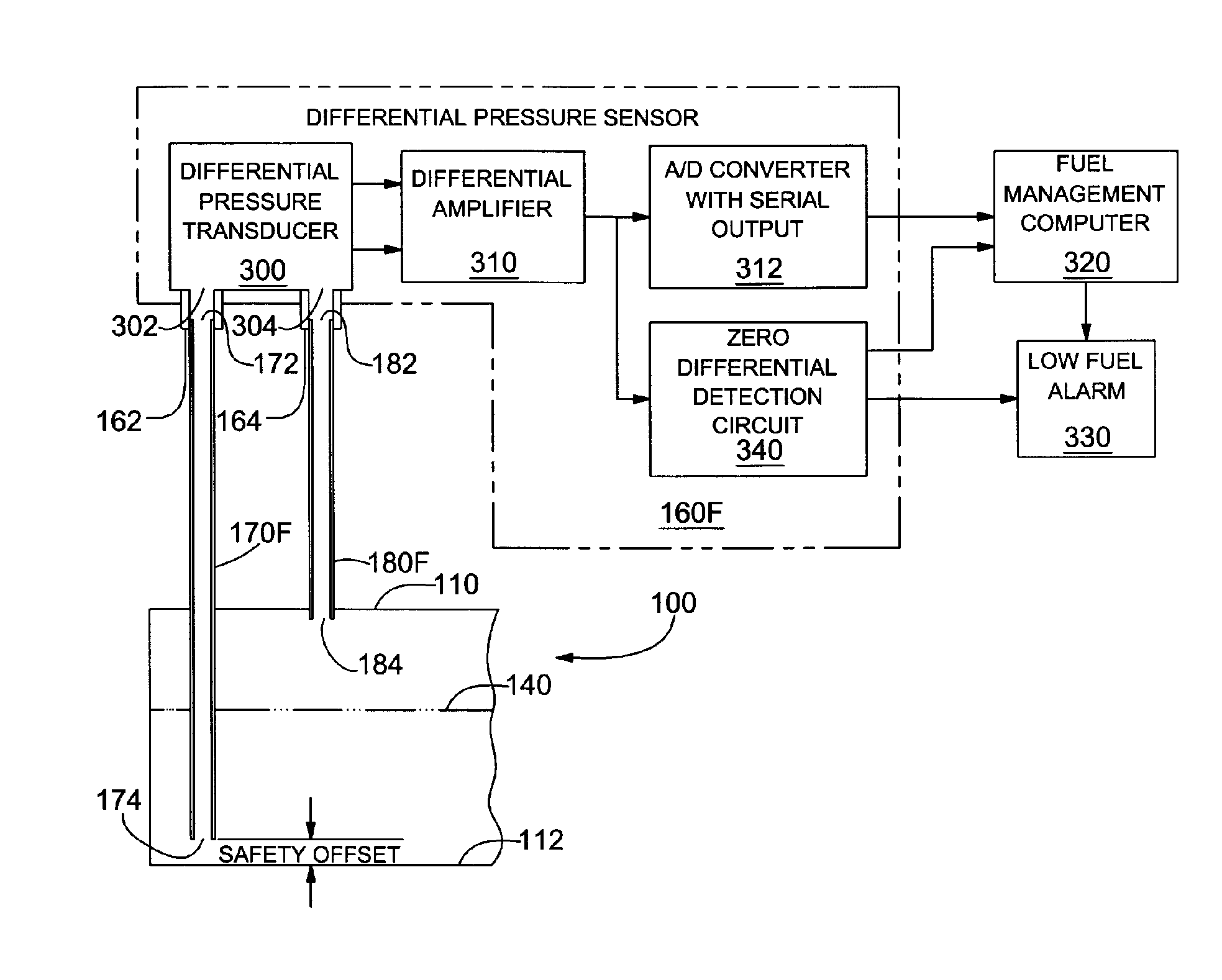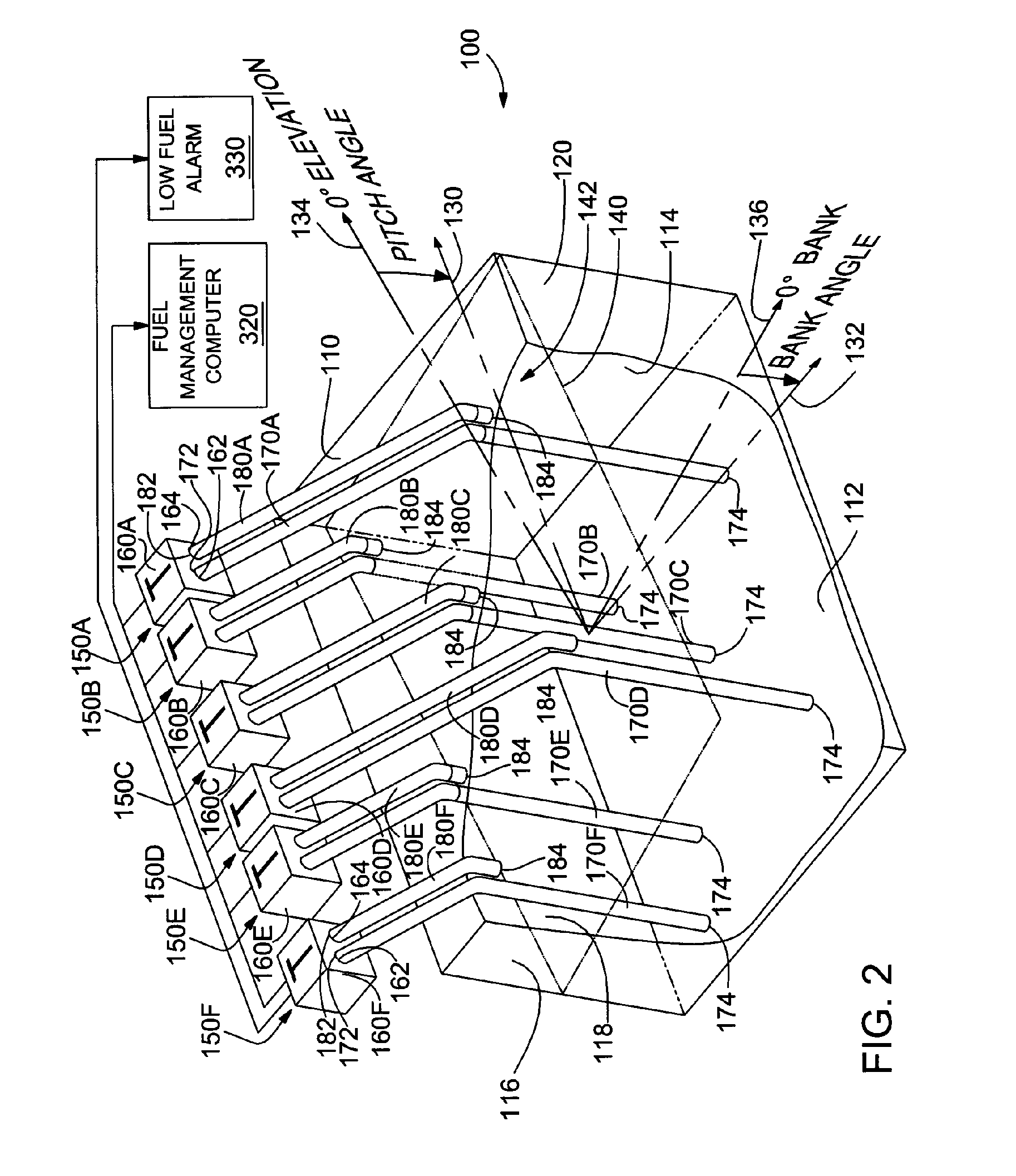Liquid measurement system having a plurality of differential pressure probes
a liquid measurement system and differential pressure technology, applied in liquid/fluent solid measurement, instruments, machines/engines, etc., can solve the problems of difficult accuracy of capacitance measurement of such a small amount, high cost of capacitive fuel probes, and inability to accurately determine liquid weight, etc., to achieve accurate determination of liquid weight, less cost, and high accuracy
- Summary
- Abstract
- Description
- Claims
- Application Information
AI Technical Summary
Benefits of technology
Problems solved by technology
Method used
Image
Examples
Embodiment Construction
[0017]FIG. 1 illustrates a tank 100 that may be used for transporting liquid in an aircraft or other machinery subject to movement. For example, the tank 100 may be a fuel tank located within the fuselage or a wing of an aircraft or it may be located within a ground transportation vehicle. In the following description, the tank 100 is located in an aircraft (not shown). Although described herein with respect to the fuel tanks of an aircraft, the invention may advantageously be embodied in other systems for measuring fuel in environments where the tank containing the fuel is subject to tilting. The invention may also be embodied in systems for measuring other liquids, such as, for example, the fire suppression liquids (e.g., water) carried in tanks of firefighting equipment.
[0018] The tank 100 may have many different configurations in order to conform the tank to the structure of the aircraft or other environment in which the tank is located. For example, the tank 100 may have an ir...
PUM
 Login to View More
Login to View More Abstract
Description
Claims
Application Information
 Login to View More
Login to View More - R&D
- Intellectual Property
- Life Sciences
- Materials
- Tech Scout
- Unparalleled Data Quality
- Higher Quality Content
- 60% Fewer Hallucinations
Browse by: Latest US Patents, China's latest patents, Technical Efficacy Thesaurus, Application Domain, Technology Topic, Popular Technical Reports.
© 2025 PatSnap. All rights reserved.Legal|Privacy policy|Modern Slavery Act Transparency Statement|Sitemap|About US| Contact US: help@patsnap.com



